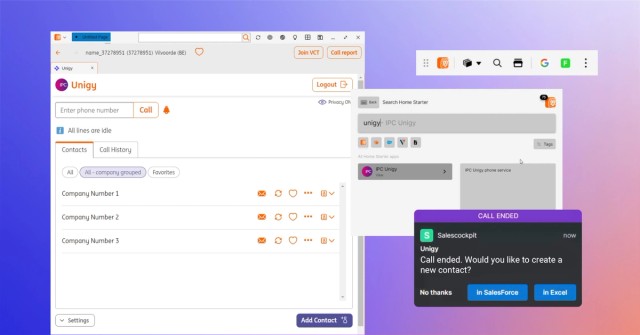October 15, 2018
The New Digital App World

Imagine a world where your innovation team meets a new AI FinTech company today and can have the product running in production on a trading desk tomorrow. Not a silo-ed app the trader has to be cajoled into trying, but one that is fully embedded in the workflow. The trader is doing her work and the AI app, recognizing the context and market conditions, pops up on the desktop and recommends a trade to do. One click by the trader and it’s executed. Maybe the trial ends and the trader wasn’t happy. No matter — you can swap it out the next day for another app and give that one a try.
At OpenFin, we think about this world every day. It informs everything we do. How do we take the cost of distributing, integrating and trialing innovation to zero on a financial desktop? We think about this world because it’s the world our thought-leading bank and buy-side customers tell us they want to live in. “Digital transformation” isn’t a buzz word. It’s about leveraging innovation and fundamentally changing the economics of the capital markets business which means improving productivity and making the business smarter, all while dramatically lowering technology debt and spend.
To get to this new digital app world (that looks a lot more like our phones than the traditional financial desktop), we need the right foundation. On our phones we have iOS and Android. On the financial desktop we have OpenFin OS. But we realized from customers that OpenFin OS needed two critical capabilities to enable the new world — Workspace and Workflow management.
Our two major initiatives this year have been focused on delivering these capabilities natively on OpenFin OS. OpenFin Layouts, developed entirely as open-source in FINOS, provides native workspace management which includes snapping-and-docking and saving-and-restoring of layouts. FDC3, the industry-backed language of financial desktop interoperability, provides seamless workflow between apps. We didn’t invent either of these concepts at OpenFin. These are design patterns that have been around for decades in finance. But they’ve never been on the financial desktop by default before.
Having these capabilities natively on OpenFin OS eliminates the fragmentation, the incompatibility, and the friction. When each bank, buy-side firm, and vendor has its own in-house or vendor-built snap-and-dock framework, all the apps can’t snap and save together. When each firm has its own desktop interoperability framework, all the apps can’t talk to each other. Native workspace management means that your vendor apps will snap to your internal apps automatically and all the apps in your workspace will save together. Native workflow management means all of your apps know how to talk to each other without time-consuming, bespoke integrations. It means you can fundamentally change how you deploy, test, and consume innovation.
There are now more than a thousand desktop apps deployed at more than 1500 banks and buy-side firms using OpenFin OS in over 60 countries. With OpenFin Layouts and FDC3, those apps are now all about to be part of the same workspace and the same workflow by default. That means the new digital app world is a lot closer than you might think. Get ready.
Enjoyed this post? Share it!
Related Posts
All Posts ->
Featured
Enhanced Deployment Flexibility with OpenFin's Fallback Manifests
Thought Leadership

Featured
ING Integrates OpenFin for Salesforce to Optimize Workflows
Thought Leadership